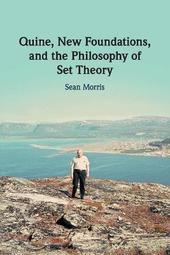
|
Quine, New Foundations, and the Philosophy of Set Theory
Paperback / softback
Main Details
| Title |
Quine, New Foundations, and the Philosophy of Set Theory
|
| Authors and Contributors |
By (author) Sean Morris
|
| Physical Properties |
| Format:Paperback / softback | | Pages:219 | | Dimensions(mm): Height 230,Width 150 |
|
| Category/Genre | Western philosophy from c 1900 to now
Analytical philosophy and Logical Positivism
Philosophy - logic |
|---|
| ISBN/Barcode |
9781316606636
|
| Classifications | Dewey:511.322 |
|---|
| Audience | | Professional & Vocational | | Postgraduate, Research & Scholarly | |
|---|
|
Publishing Details |
| Publisher |
Cambridge University Press
|
| Imprint |
Cambridge University Press
|
| Publication Date |
21 January 2021 |
| Publication Country |
United Kingdom
|
Description
Quine's set theory, New Foundations, has often been treated as an anomaly in the history and philosophy of set theory. In this book, Sean Morris shows that it is in fact well-motivated, emerging in a natural way from the early development of set theory. Morris introduces and explores the notion of set theory as explication: the view that there is no single correct axiomatization of set theory, but rather that the various axiomatizations all serve to explicate the notion of set and are judged largely according to pragmatic criteria. Morris also brings out the important interplay between New Foundations, Quine's philosophy of set theory, and his philosophy more generally. We see that his early technical work in logic foreshadows his later famed naturalism, with his philosophy of set theory playing a crucial role in his primary philosophical project of clarifying our conceptual scheme and specifically its logical and mathematical components.
Author Biography
Sean Morris is Associate Professor of Philosophy at the Metropolitan State University of Denver. He has written extensively on Quine and the history of analytic philosophy with a particular emphasis on Quine's work in the foundations of mathematics.
Reviews'Sean Morris's book fills a heretofore gaping hole in our understanding of the origins and history of set theory, explaining how Quine's New Foundations is not the isolated, idiosyncratic system it is sometimes taken to be, but is instead deeply connected - historically, philosophically, and mathematically - to other, now more mainstream, accounts of the nature of sets.' Roy T. Cook, University of Minnesota, Twin Cities
|